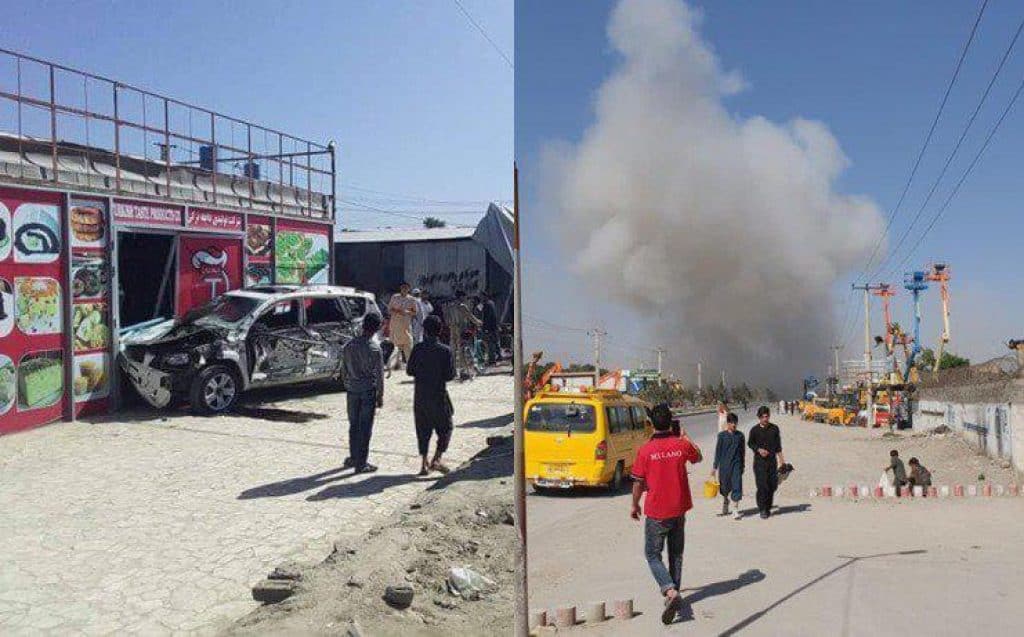
A Taliban suicide bomber detonated his explosives-laden vehicle as a American convoy passed by in Kabul earlier today. A spokesman for the police in Kabul said that four Afghans were killed and three others wounded, according to the Associated Press. Four US service members were injured in the blast.
The Taliban quickly claimed responsibility. In a statement attributed to its spokesman, Zabihullah Mujahid, the group said the attack is part of the “ongoing successful Al-Fath Operations,” which are being carried out throughout the country. The Taliban says the target of this “martyr attack” was a “convoy of senior foreign invaders passing through” Kabul’s eastern PD9 “at around 09:00 am local time today.”
Mujahid identifies the bomber as a “heroic Mujahid (Siddique from Khost),” who used “a car packed with heavy explosives.”
The Taliban exaggerated US casualties, claiming that the explosion “killed 10 invaders including senior officers,” while also destroying “2 enemy Land Cruiser SUVs.” Initial independent reports say that several Afghans were killed, while four Americans were wounded.
The Taliban’s “martyrdom” attack in Kabul was executed just one day after the Islamic State’s Khorasan branch launched its own suicide bombing in the Afghan capital. A loyalist of the so-called caliphate struck outside the the Marshal Fahim National Defense University, killing six people and wounding others. It was the second time that the military academy has been targeted by the Khorasan “province,” with the first attack occurring in Jan. 2018.
As FDD’s Long War Journal noted yesterday, Kabul continues to be the jihadists’ number one target when it comes to suicide bombings and other complex operations.
Twenty-eight (28) of the 65 “suicide and complex attacks” counted by United Nations Assistance Mission in Afghanistan (UNAMA) in 2018 occurred inside the Afghan capital. This was more than in any other area of Afghanistan. These same “martyrdom” operations accounted for “1,686 civilian casualties (554 deaths and 1,132 injuries)” in Kabul last year, a “five per cent increase in the number of casualties from” 2017.
The “attacks perpetrated in Kabul mainly targeted civilians, including the civilian Government administration, places of worship, education facilities, election-related sites and other ‘soft’ targets,” UNAMA reported.







